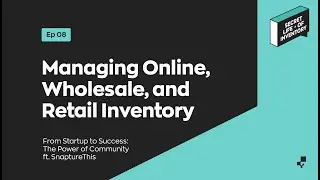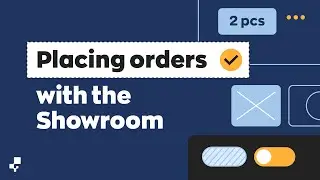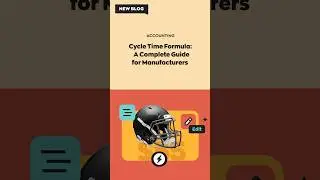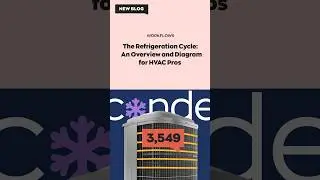Types of Retail Inventory | Secret Life of Inventory
Secret Life of Inventory | Mastering Retail Inventory (Best Practices & Real World Stories)
Listen to the full episode: • Mastering Retail Inventory (Why did F...
Read our blog to learn more | The 5 Fundamental Types of Inventory Everyone Should Know:
https://www.inflowinventory.com/blog/...
Try inFlow's 14-day free trial to manage your inventory and make sure you never run out of stock:
https://www.inflowinventory.com/
Stream our podcast on Spotify:
https://open.spotify.com/show/2ynkKYh...
About Secret Life of Inventory:
Welcome to the Secret Life of Inventory – a show where we delve deep into the unseen world of inventory management, revealing the hidden mysteries that help small businesses (like you) optimize their workflow and succeed!
Transcript:
Are there any other types of retail inventory that people should be aware of? So I guess the best way to think about it is, is breaking your finished goods down and kind of into different categories. So there's five main categories that you want to want to think about when you're dealing with your finished goods. The first one is the ready for sale. So that's all your stuff that's on the shelf. It's ready to go. Customers can buy it whenever they want. It's available for purchase right? Now, it's pretty obvious when you're a brick and mortar store if it's ready for sale, because if it's not ready for sale, it's gone. The customer is taking it out the door. They pick it up off the shelf, they take it, and then it's gone. Right? So it's more for ecommerce. When something's ready for sale and someone's purchased it, it moves into the next category, the second one which is allocated. So it's it may be on the shelf and you may have it in your actual facility and your in your space, but it's actually not really there, so to speak, because it's already been sold to a customer. So it's allocated to a sale. Right? So you can't sell that again. You got to make sure that you're not just looking at your inventory and saying like, oh, I have this thing, I can sell it. You don't know that you really have it. Even if you're tracking your inventory on, say, a spreadsheet or I think this entire podcast is me, just talk poorly about spreadsheets. PTSD. Exactly, exactly. Right? So if you're if you're using a spreadsheet or manually or whatnot and you forget to, maybe there's a lot of different salespeople that are working on something and one of them forgets to update the spreadsheet saying that they sold this item, you see it on the spreadsheet, oh, I have this. So then you sell it, then you find out, oh no, I actually don't have that thing. So that's why it's really important to make sure that you're labeling these things as they go down the process, you know, ready for sale into allocated and then into our next one which is in transit. So in transit is essentially all of your products that are actually in transit. It's in the name obviously. So when it's when you send it out from your facility or your storage warehouse or whatever, you've shipped it off as it's on the way until it gets to your customer, you're still liable for that thing, right? That's still important to make sure that you understand that it's out there still technically a part of your inventory, right until it reaches the customer's hands, the sale is not complete, right? So those are in transit. And again, you should be tracking ready for sale to allocate it to in transit. And then the next one, of course is actually the next two are pretty closely related. And those are safety stock and your seasonal. So first safety stock is something that you should always have. Right. Because things will are going to happen inevitably in business. We all know that things are going to happen. So it's important to have like a cushion, like a backup plan. Yeah a parachute. You don't want to jump out of a plane without a parachute, right. So that's what safety stock. You die. Yes. And your business will die without safety. So maybe not, but, uh, it could. So it's more likely to. We'll say that for sure. So yeah, it's very important to have that on hand. Just knows what if moments those just in case moments. Right now seasonal is a lot like safety stock. Except it is. It's more for those moments that you can plan for. Right. It's not that just in case. Like Valintine's Day Black Friday. Exactly. Yeah yeah. Seasonal you know so. Seasonal things. And can even just be like if you have if you're doing a really good demand forecasting and you see that, oh this time of March, I usually sell a lot of this particular product, then you can prepare for them, get some extra seasonal inventory for that moment. Yeah, right. So those are, I guess, the five main categories of your finished goods if you want to break them down further.
#retailinventory #retail #inventorymanagement #sercretlifeofinventory #typesofretailinventory





![[FREE] Simba x BM Type Beat -](https://images.videosashka.com/watch/pbjPBwGuI6k)

























